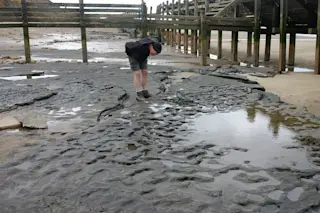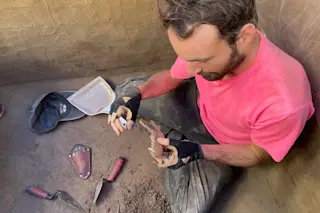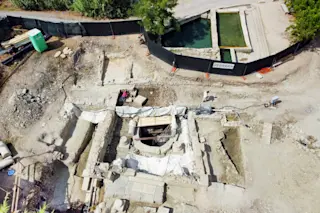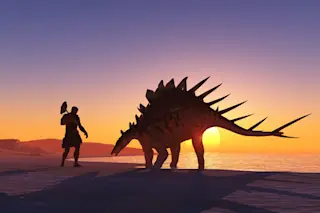The East Anglian villageof Happisburgh, on the U.K.’s Norfolk coast, is a picturesque farming community of about 1,400 people. For 150 years, severe coastal erosion from groundwater and the North Sea has undermined land near the beaches — but that’s not always a bad thing. Just ask British paleoanthropologist Chris Stringer.
Stringer, of the British Natural History Museum, is best known as a founding theorist of the so-called “out of Africa” theory, which contends that modern humans evolved in Africa before radiating around the globe. In May 2013, he was part of a team conducting an excavation on a beach near Happisburgh when the researchers stumbled upon a treasure, a gift that was the result of erosion.
Some of the Happisburgh footprints even included toe impressions. | Ashton et al/ PLoS ONE 9(2): e88329. doi:10.1371/journal.pone.0088329
After a portion of cliff was washed away by the sea, the team found ancient ...















